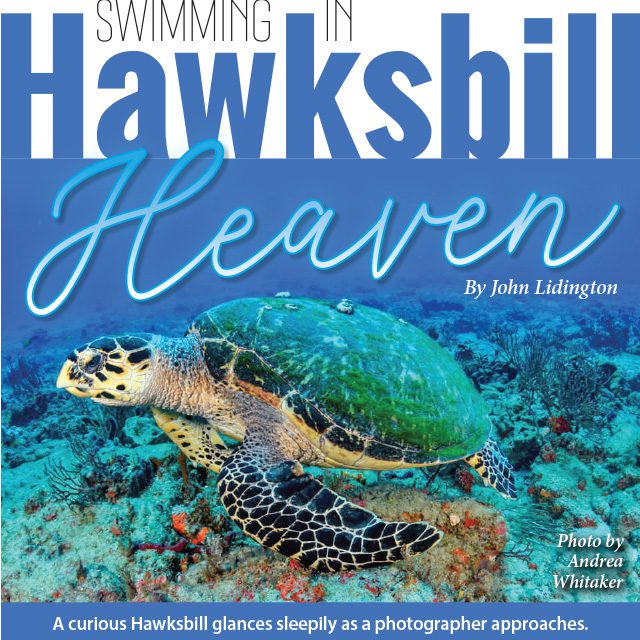Imagine looking up while taking a photo to find a sea turtle peering over your shoulder, checking out what you’re doing. It’s not what you would expect from these normally shy creatures, but it happened to a volunteer working with Dr. Larry Wood on the Florida Hawksbill Project.
Such behavior doesn’t surprise Dr. Wood. He’s been studying hawksbill turtles for almost 20 years. He said Palm Beach County hawksbills show much less concern about divers than other species of sea turtles. In his permitted work, he brings turtles aboard a boat to weigh, measure, tag and take blood samples. To a turtle, this must seem like getting a full-body probe aboard a UFO. Yet even when Dr. Wood has re-encountered a “probed” turtle, it typically shows no increased wariness.
In addition to their acceptance of divers, Palm Beach hawksbills have another characteristic important for those who want to see them; they’re year-round residents. Unlike loggerhead, green and leatherback sea turtles seen off Palm Beach primarily during the late-spring to early summer nesting season, the odds of a diver spotting a hawksbill are about the same any month of the year.
Dr. Wood’s research provides a plausible reason for this. After hatching, all sea turtles “disappear” into the open ocean. After a few years this pelagic phase ends, and they reappear nearshore as sub-adults. Once they reach sexual maturity, turtles return to the beaches where they hatched.
For the Palm Beach population, DNA analysis shows most come from the Yucatan Peninsula. Their average length is only about 20 inches long, and they rarely show signs of sexual maturity. It’s a population of sub-adults that has come up with prevailing currents and is taking a few years to bulk up before heading back to their native beaches.
In support of this idea, Dr. Wood has found that hawksbills in the Florida Keys are smaller than their cousins to the north. That is consistent with juveniles leaving the currents of the Gulf of Mexico for the shallow waters of the Keys, then growing as they slowly work their way northward. Learn more about his research and that of others, at http://savetheseaturtle.org/.
As a diver, how do you see a hawksbill? Dr. Wood’s studies show that individual hawksbills stay within relatively small territories for extended periods of time. Diving where hawksbills are commonly seen increases your odds. Pura Vida Divers knows about recent hawksbill sightings and runs trips to those areas.
During the summer, you can learn more about sea turtles from Dr. Wood and observe hatchlings making their way to the water during Pura Vida Diver’s Sunrise Sea Turtle Education Walks throughout July and August.
Remember, hawksbills are critically endangered. It’s illegal to do anything that alters their natural behavior. However, if you’re drifting through habitats likely to attract hawksbills, there’s a good chance you’ll see one.
Contact Pura Vida Divers at (561) 840-8750 or visit www.puravidadivers.com.
